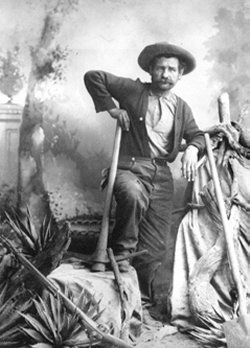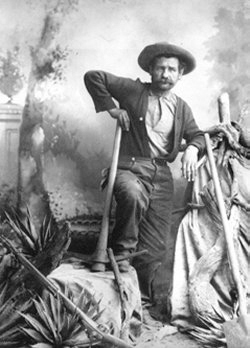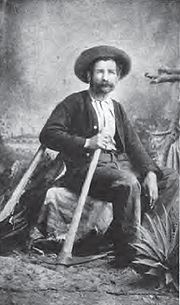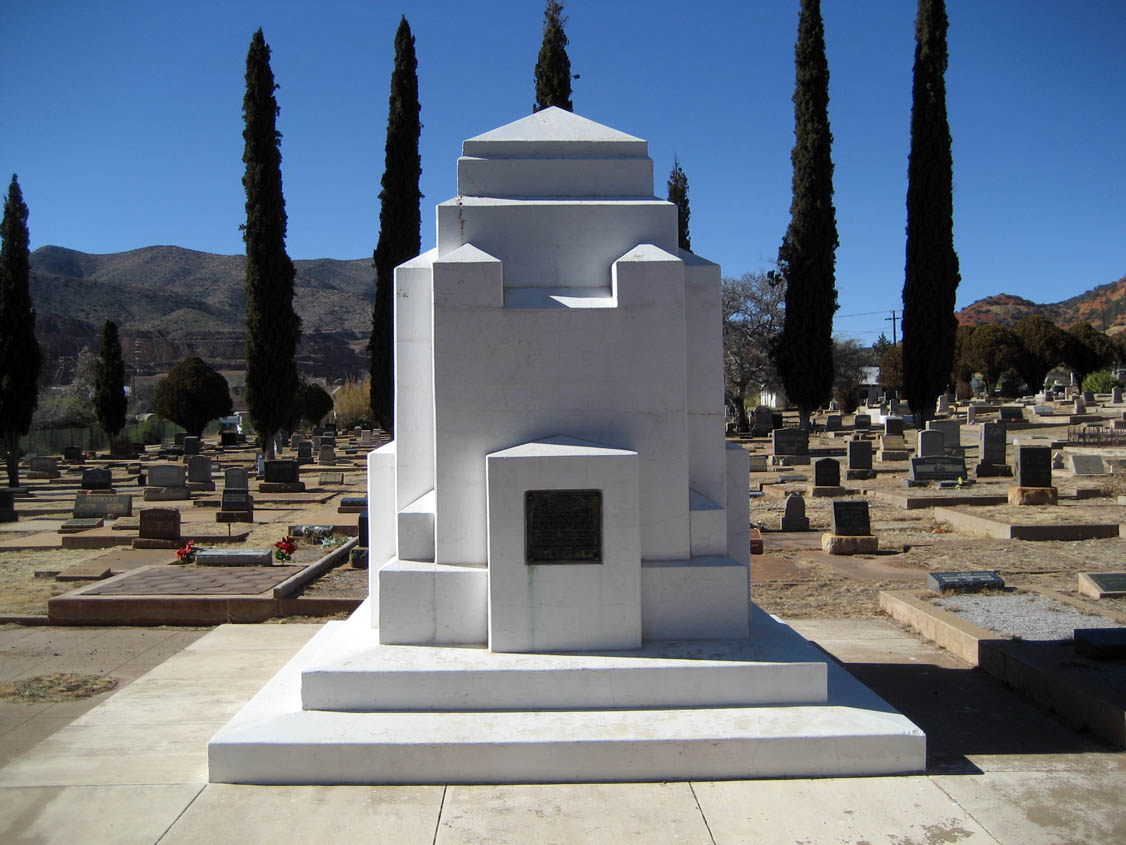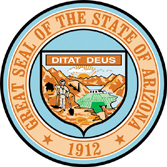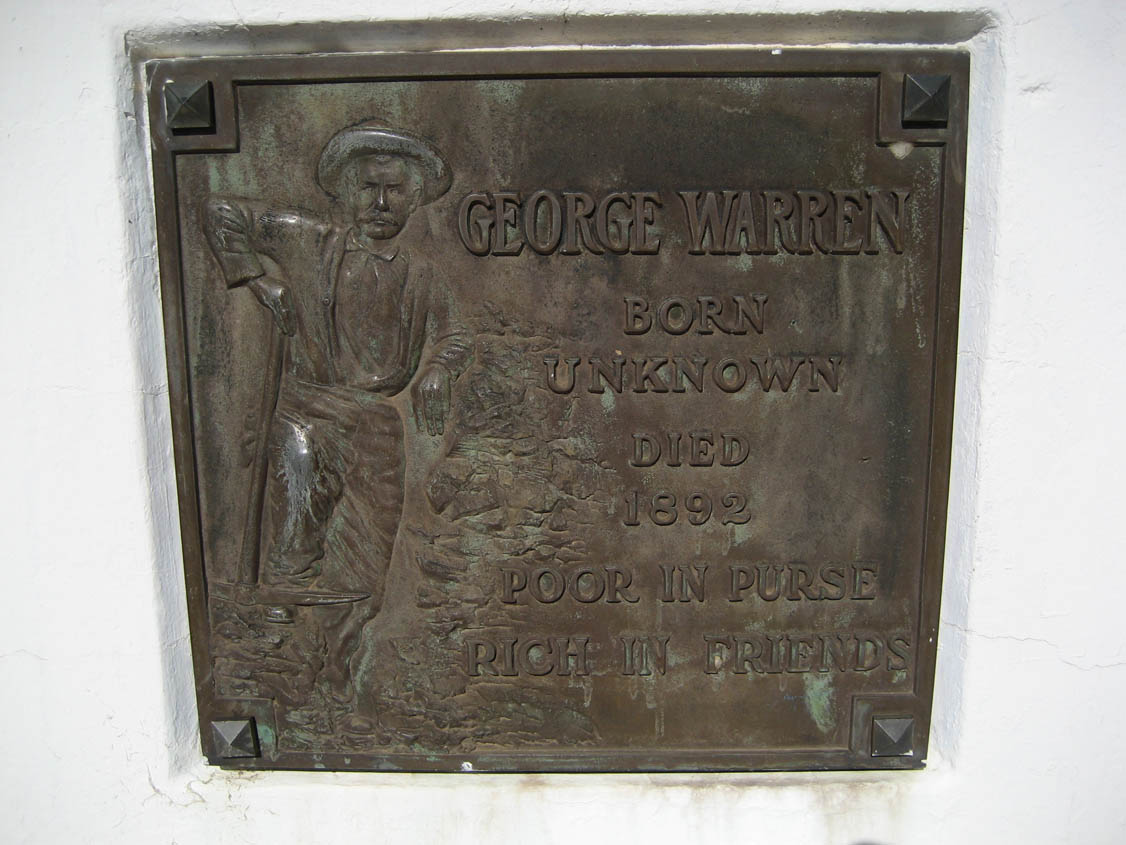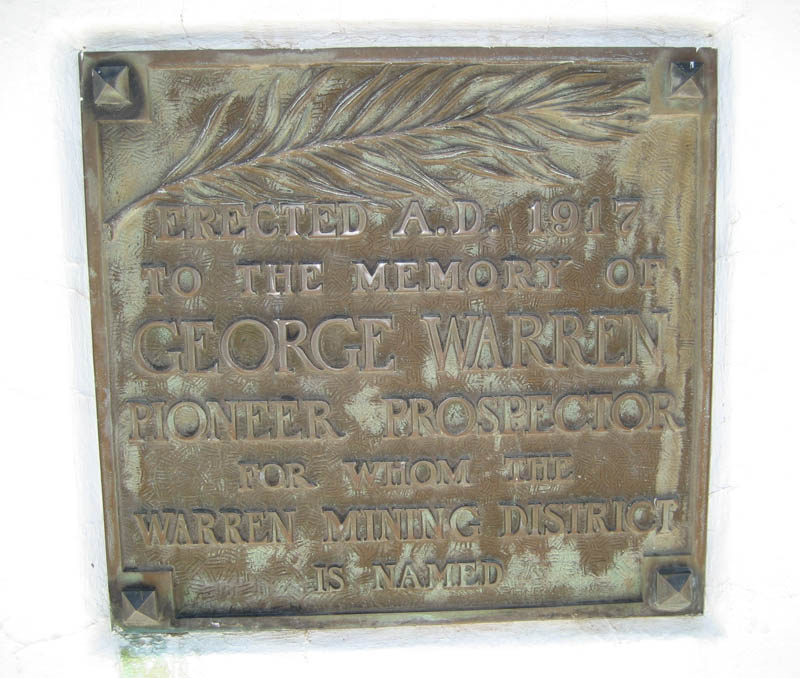George lost his mother as a young boy and at the age of 10, joined his father who was a government herder in New Mexico. While herding horses, the Warrens were attacked by Apaches; George was wounded and and his father was killed. George was held captive for 18 months and traded to prospectors for 20 pounds of sugar. Warren remained with these men for some time learning their prospecting trade.
Copper mineralized rocks may have been noted in the Mule Mountains in Southern Arizona as early as 1876. The confirmed discovery of copper in these mountains, however, was made by John Dunn, a member of a scouting party from nearby Fort Bowie. Dunn soon staked some claims and offered to grubstake George Warren, who accepted the agreement in late summer of 1877 but did not honor his committment. George and several friends from Tombstone, Arizona located a number of claims in the Mule Mountains, which established the Warren Mining District. George had one-ninth interest in the Copper Queen mine, which according to legend, he lost after the outcome of an imprudent foot race in 1879.
In May 1981, he was judged to be insane by Cochise County Court Probate Judge J.H. Lucas. A guardian was appointed and his remaining property including real estate, and interests in mining claims were sold at public auction. He was released after his property was sold; he then went into Mexico where he sold himself into peonage for money to work his latest discovery. Judge G.H. Berry, hearing of this went to rescue George and pay off his debt so he could return to Bisbee.
He thereafter spent much of his times doing occasional work for the Copper Queen Mining Company and odd jobs around saloons for a drink of whiskey. The details of his birth and death dates are subject to a variety of opinions. The plaque at the Bisbee-Lowell Evergreen Cemetery lists the date of death as 1892. A death certificate, probably for the same person indicates he died of pneumonia and heart failure in Cochise County on February 13, 1893. An Arizona Republic article about Bisbee in September 15, 1897 stated Warren had died "three years ago".
~~~~~~~~~~~~
Bisbee Daily Review, Arizona, 9 October 1904
Imposing Monuments - The Williams Bros. have quarried the stone for the Warren and Angius monuments. When finished these monuments will be the most imposing in the cemetery.
Courtesy of Contributor Q.E.P.D.
George lost his mother as a young boy and at the age of 10, joined his father who was a government herder in New Mexico. While herding horses, the Warrens were attacked by Apaches; George was wounded and and his father was killed. George was held captive for 18 months and traded to prospectors for 20 pounds of sugar. Warren remained with these men for some time learning their prospecting trade.
Copper mineralized rocks may have been noted in the Mule Mountains in Southern Arizona as early as 1876. The confirmed discovery of copper in these mountains, however, was made by John Dunn, a member of a scouting party from nearby Fort Bowie. Dunn soon staked some claims and offered to grubstake George Warren, who accepted the agreement in late summer of 1877 but did not honor his committment. George and several friends from Tombstone, Arizona located a number of claims in the Mule Mountains, which established the Warren Mining District. George had one-ninth interest in the Copper Queen mine, which according to legend, he lost after the outcome of an imprudent foot race in 1879.
In May 1981, he was judged to be insane by Cochise County Court Probate Judge J.H. Lucas. A guardian was appointed and his remaining property including real estate, and interests in mining claims were sold at public auction. He was released after his property was sold; he then went into Mexico where he sold himself into peonage for money to work his latest discovery. Judge G.H. Berry, hearing of this went to rescue George and pay off his debt so he could return to Bisbee.
He thereafter spent much of his times doing occasional work for the Copper Queen Mining Company and odd jobs around saloons for a drink of whiskey. The details of his birth and death dates are subject to a variety of opinions. The plaque at the Bisbee-Lowell Evergreen Cemetery lists the date of death as 1892. A death certificate, probably for the same person indicates he died of pneumonia and heart failure in Cochise County on February 13, 1893. An Arizona Republic article about Bisbee in September 15, 1897 stated Warren had died "three years ago".
~~~~~~~~~~~~
Bisbee Daily Review, Arizona, 9 October 1904
Imposing Monuments - The Williams Bros. have quarried the stone for the Warren and Angius monuments. When finished these monuments will be the most imposing in the cemetery.
Courtesy of Contributor Q.E.P.D.
